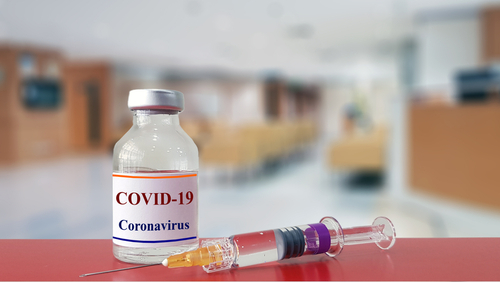
In a teleconference between experts from the Immunization Action Coalition, FasterCures and the U.S. Food and Drug Administration (FDA) on Friday, one thing was made abundantly clear: the world needs the best possible vaccines to combat COVID-19 as quickly as possible.
In the opinion of Dr. Peter Marks, director of the Center for Biologics Evaluation and Research at the FDA, this could mean a 12 to 18-month process before a vaccine plausibly hits distribution.
“From the FDA perspective, and this may be a little unusual hearing from the FDA, the agency clearly recognizes development of the vaccine for this virus is possibly one of the most important things for the next few years,” Marks said. “It’s not unlikely we may see a second or even third wave if we don’t get it right and get it right quickly.”
The problem is that for this particular pathogen, SARS-CoV-2 – the virus responsible for COVID-19 – there were no existing products already under consideration in the developmental pipeline. That left private and public entities scrambling to figure out how to produce vaccines from scratch.
“Vaccine development is not simple,” Dr. Litjen Tan, chief strategy officer of the Immunization Action Coalition, noted. “Traditional vaccine development can take 10, 15, sometimes 20 years or more and cost millions of dollars.”
Further, those processes tend to involve large amounts of participants and many falter before Phase 3 clinical development due to cost alone. Those trials are well-monitored, subject to stringent oversight and ethical considerations, and in general, have to meet a high bar to proceed. Complexities in the midst of development might complicate things, or push the timetable further out, especially considering that efficacy figures can vary among targeted populations.
By comparison, even at a 12-18 month delivery time for any COVID-19 vaccine, the efforts today are extremely accelerated. In fact, according to Esther Krofah, executive director of FasterCures, 86 different active vaccine projects are currently underway, with more continuously being added to the list. Another two dozen are expected to enter clinical trials by this summer or fall. Despite the large number of vaccine possibilities competing for development in the pipeline, Krofah is also anticipating a 12-18 month timeline for effective vaccines.
The medical community will achieve that through simultaneous, rather than sequential clinical trials. This means some trials are compressed, others are running parallel and multiple target populations are likely to be tested for efficacy at the same time. Many tests are also likely to be conducted in multiple countries on multiple subjects simultaneously. They’re also achieving this through unique partnerships. Big pharma is working with smaller, more specialized developers and academics.
“We will be working in a somewhat different way than we generally do with sponsors, looking at real-time data as it comes in, decreasing the holes at different stages of development,” Marks said. “We hope to facilitate rapid development.”
But finding the balance between speed and success is challenging. Marks noted that with such a deluge of candidates, choosing the wrong one could pry resources from moving the right candidates forward. Most vaccines have heaps of gathered data to inform decision-making.
“The real issue here is trying to get things moved too fast, we may not have the long-term data we normally might like,” Marks said. “We may be putting real-world evidence into practice by vaccinating relatively large populations of individuals, maybe higher risk, and gathering data in the real world. There are ways of doing randomized trials in the real world in situations that come up like this.”
Together with vaccine sponsors, the FDA is sifting through preclinical data, animal modeling and closely examining real-time data to understand as much as it can about the characteristics of the vaccines.
“We’re talking about vaccinating a few hundred million people in this country alone, and a few billion globally,” Marks said. “One would try to get it right to the extent you can, working at a very rapid pace.”
At the same time, Tan added, “We don’t want to have perfection be the enemy of the good.”




